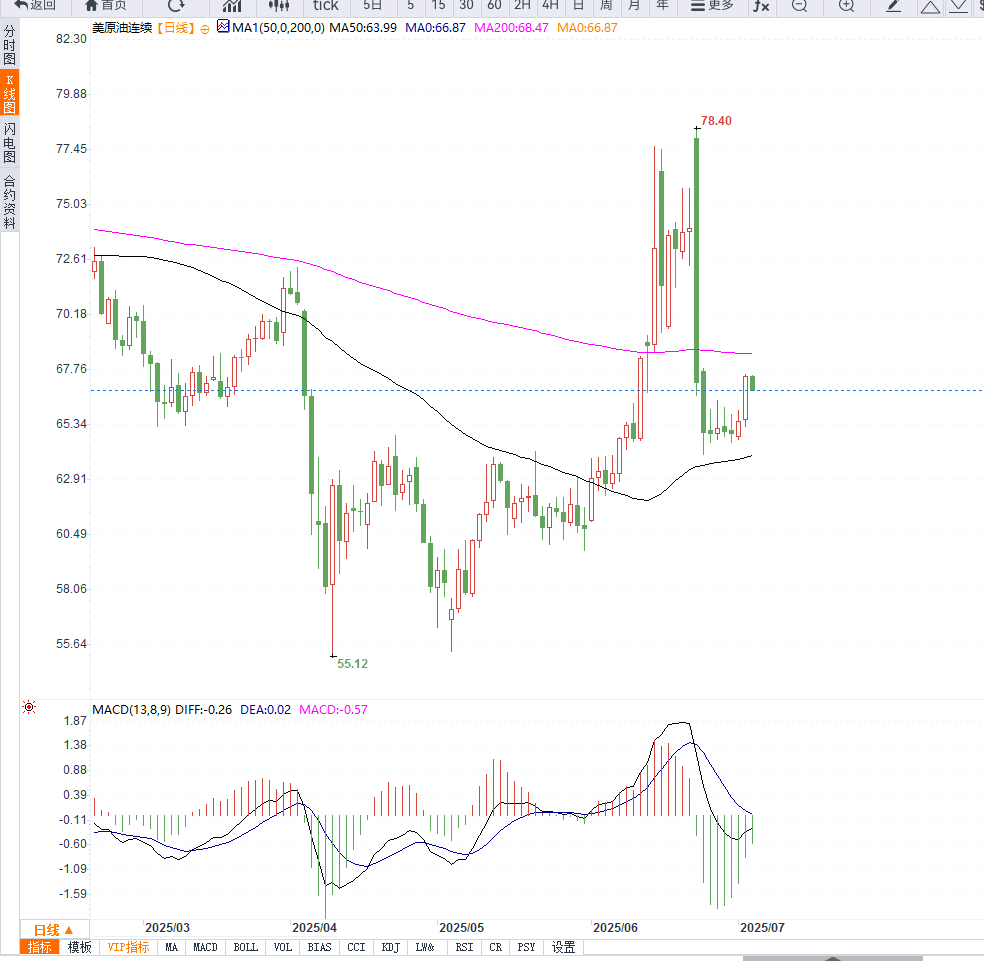Crude oil trading reminder: Inventory data unexpectedly increased, which is unfavorable for oil price bulls. In the short term, the price will fluctuate within a range and wait for the release of non-agricultural data.
2025-07-03 10:20:41
The unexpected increase in U.S. crude oil inventories is the main factor in this round of correction. According to data from the U.S. Energy Information Administration (EIA), as of last week, U.S. crude oil inventories increased by 3.8 million barrels, totaling 419 million barrels, while the market had generally expected a decrease of 1.8 million barrels, indicating that the weakness on the demand side exceeded expectations.
"The unexpected build in inventories is worrisome, especially during the traditionally high summer gasoline demand period in the U.S.," said one energy analyst.

Data showed that U.S. gasoline demand fell to 8.6 million barrels per day, further raising market concerns about insufficient summer consumption, which is seen as one of the important indicators of economic vitality, especially during the peak tourism and travel season.
However, oil prices rose on Wednesday, mainly driven by geopolitical and trade factors. Iran's parliament passed a bill to suspend cooperation with UN inspection agencies, which once again exacerbated tensions in the Middle East and made the market worry that escalating conflicts would affect crude oil supply.
An expert on Middle East affairs pointed out: "If the Iran nuclear deal issue deteriorates further, it may reignite regional conflicts and put the global oil market at risk of new supply disruptions."
On the other hand, the trade agreement reached between the United States and Vietnam also provided some support to the market. The agreement set a 20% tariff on some Vietnamese export products. Although the intensity was high, the agreement itself released a signal of trade stability, boosting the market's confidence in the recovery of global economic demand.
Investors are now turning their attention to the upcoming U.S. employment data to predict the Fed's policy moves. Analysts believe that if the employment data is weak, it will increase market expectations for interest rate cuts in the second half of the year, which may indirectly stimulate economic activity and thus boost crude oil demand.
A market strategist pointed out: "Lower interest rates usually stimulate corporate investment and consumer spending, driving up energy consumption."
It is worth noting that a private employment data released on Wednesday showed that the number of US jobs shrank for the first time in two years. However, analysts cautioned that the report lacked a direct correlation with the government employment data.
From a technical perspective, US WTI crude oil showed signs of short-term weakness on the daily chart. Although there was a strong rebound in the previous trading day, the price encountered resistance near the 50-day moving average (about $67.50), indicating that the upward pressure is still obvious.
The current K-line forms a small positive line with a long upper shadow, suggesting that there is selling pressure at a high level. The 14-day relative strength index (RSI) hovers around 50, and no obvious bullish momentum has been formed. The initial support level below is in the $66.20 area. If this level is lost, it may trigger a technical correction and further test the $65 mark.

Editor's opinion:
In the short term, the crude oil market will continue to seek a balance between weak demand and geopolitical risks. Although the situation in Iran and trade stability support the market, the actual performance of US crude oil inventories and gasoline consumption is the key to determining the direction of oil prices.
If the US employment data continues to be poor, it may push the Federal Reserve to cut interest rates ahead of schedule, thereby supporting oil prices. However, if inventories continue to rise, oil prices may find it difficult to maintain a rebound.
- Risk Warning and Disclaimer
- The market involves risk, and trading may not be suitable for all investors. This article is for reference only and does not constitute personal investment advice, nor does it take into account certain users’ specific investment objectives, financial situation, or other needs. Any investment decisions made based on this information are at your own risk.










